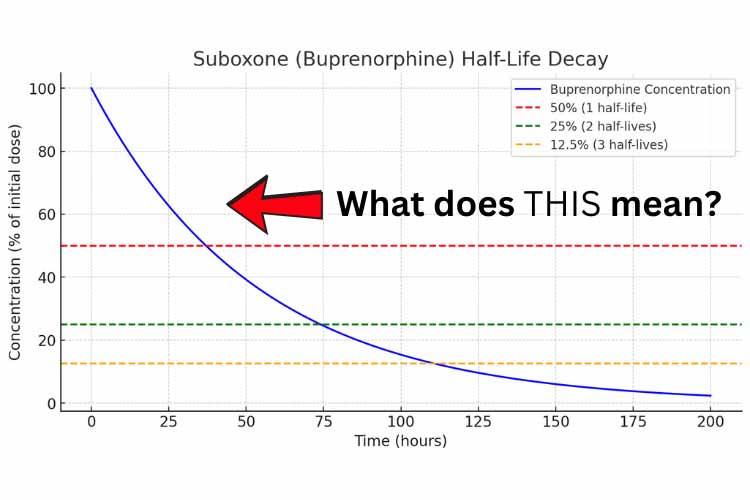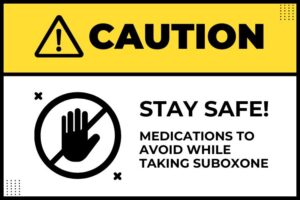Introduction
Suboxone is a life-changing medication for people recovering from opioid dependence, helping to reduce cravings and withdrawal symptoms. However, many patients have questions about how long it stays in the body—whether for medical, treatment, or personal health reasons.
Understanding how Suboxone is processed and eliminated can help patients manage their treatment safely and effectively. This guide explains what factors influence how long Suboxone stays in your system and what that means for medical care and drug screenings.
How Suboxone Works in the Body
Suboxone is a combination medication containing:
- Buprenorphine – A partial opioid agonist that binds to opioid receptors, reducing cravings and withdrawal symptoms without producing a strong high.
- Naloxone – An opioid antagonist included to prevent misuse (by blocking opioid effects if injected).
Since buprenorphine has a long half-life, it remains in the body longer than many other opioids, allowing for once-daily dosing in most cases.
How Long Does Suboxone Stay in Your System?
Buprenorphine Half-Life & Elimination
- The half-life of buprenorphine is 24 to 42 hours.
- Full elimination can take 7 to 10 days, depending on individual metabolism.
Naloxone Half-Life & Elimination
- Naloxone has a much shorter half-life (2 to 12 hours).
- It is usually cleared from the body within 24 hours.
Since buprenorphine is the active ingredient providing opioid treatment benefits, most discussions about Suboxone metabolism focus on buprenorphine’s clearance rate.
Factors That Affect How Long Suboxone Stays in Your System
Each person’s body processes medication differently. Several factors impact how long Suboxone remains detectable, including:
- Dosage & Frequency of Use – Higher doses or long-term use may extend elimination time.
- Metabolism & Liver Function – Since Suboxone is processed in the liver, individuals with slower metabolism or liver issues may take longer to clear it.
- Body Composition – Fat cells can store traces of buprenorphine, meaning people with higher body fat percentages might retain it slightly longer.
- Hydration & Activity Levels – Staying well-hydrated and physically active can support natural metabolism, but there’s no way to “flush” Suboxone out of the system quickly.
Does Suboxone Show Up on a Drug Test?
Understanding Drug Screening for Suboxone
Many patients are concerned about whether Suboxone will appear on a drug test, whether for medical reasons, employment, or legal situations. Here’s what you need to know:
- Standard Drug Tests (5-Panel & 10-Panel Tests)
- Most routine drug screens do not test for Suboxone (buprenorphine).
- These tests commonly check for heroin, oxycodone, fentanyl, and other opioids, but buprenorphine is chemically different.
- Specialized Buprenorphine Tests
- Some employers, doctors, or legal entities may use specific tests that detect buprenorphine.
- These tests can identify Suboxone use for up to 7–10 days after the last dose.
How Long Can Suboxone Be Detected?
| Test Type | Detection Window |
| Urine Test | Up to 7–10 days |
| Blood Test | Up to 2 days |
| Saliva Test | Up to 3 days |
| Hair Test | Up to 90 days (not commonly used) |
Why Transparency in Treatment Matters
If a patient is required to take a drug test, it’s always best to disclose Suboxone use upfront—especially in medical, legal, or employment settings. Suboxone is a prescribed medication used for treatment, and it should be discussed openly with healthcare providers or employers if necessary.
Can You Speed Up the Process of Eliminating Suboxone?
There is no reliable way to remove Suboxone from your system faster than your body naturally processes it. However, maintaining a healthy metabolism through hydration, proper nutrition, and regular exercise may support natural elimination.
It is not recommended to try to manipulate drug test results, as this can be unsafe and counterproductive to recovery. Patients should consult their healthcare provider if they have concerns about Suboxone clearance.
Key Takeaways
- Buprenorphine, the active ingredient in Suboxone, has a half-life of 24–42 hours and can take 7–10 days to fully leave the system.
- Routine drug tests do not usually detect Suboxone, but specialized tests can.
- Individual factors like metabolism, liver health, and dosage impact how long Suboxone stays in the body.
- Suboxone is a prescribed medication, and patients should be open with healthcare providers and employers if required to take a test.
If you have questions about your Suboxone treatment or drug testing concerns, always speak with your provider. They can offer guidance based on your specific medical situation.









